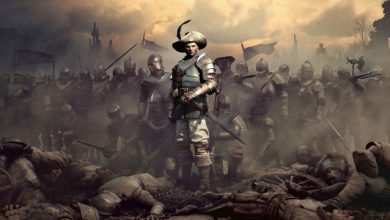The following review does not contain any plot spoilers
![]() By now it would be safe to assume that when it comes to RPGs, Bioware can’t do anything wrong. Last year, the RPG juggernaut delivered a near flawless old-school role-playing experience with Dragon Age: Origins. And now a couple of months later, they’re back with one of the most anticipated titles of the year – Mass Effect 2, a game that sits pretty much on the opposite end of the RPG spectrum when compared to Dragon Age: Origins. Bioware certainly has broken a lot of rules and created some new ones with Mass Effect 2. RPG purists may have some trouble adjusting to its bold new direction, but whichever way you look at it, the end result is probably one of the finest and most memorable gaming experiences you’ll have in a long time. If you’ve played the first game in the series and loved it, there really is no reason for you to read the rest of the review; just go buy the game and start playing it already. The more skeptical ones can read on.
By now it would be safe to assume that when it comes to RPGs, Bioware can’t do anything wrong. Last year, the RPG juggernaut delivered a near flawless old-school role-playing experience with Dragon Age: Origins. And now a couple of months later, they’re back with one of the most anticipated titles of the year – Mass Effect 2, a game that sits pretty much on the opposite end of the RPG spectrum when compared to Dragon Age: Origins. Bioware certainly has broken a lot of rules and created some new ones with Mass Effect 2. RPG purists may have some trouble adjusting to its bold new direction, but whichever way you look at it, the end result is probably one of the finest and most memorable gaming experiences you’ll have in a long time. If you’ve played the first game in the series and loved it, there really is no reason for you to read the rest of the review; just go buy the game and start playing it already. The more skeptical ones can read on.
[singlepic id=1816 w=450 float=center]
Mass Effect 2 is a direct sequel to 2007’s Mass Effect and the second chapter of a planned trilogy. Despite featuring a brilliantly realised sci-fi universe, excellent writing and an epic story, the first game was marred by a few technical flaws, largely uninteresting combat, a cumbersome inventory system and repetitive side missions. Mass Effect 2, however, addresses all of those flaws while making some major changes to the standard RPG template. A lot of fans (including myself) had expressed concerns over the game inching closer to a shooter than an RPG after some of the early previews. Yes, the combat system has been revamped to resemble a shooter, “quests” have become “missions”, complete with a summary screen at the end and many of the RPG elements are redone and some are stripped off entirely. However, the game is still an RPG at heart and everything you loved about the first game is here, better than ever and everything you hated is nowhere to be found.
The first thing you’ll notice after booting up the game is just how good it looks. The first Mass Effect was a good-looking game, but this one gets a major overhaul in the looks department. The Unreal Engine 3 has been around for a while and just when you were wondering how much juice is left in the ubiquitous engine, along comes Mass Effect 2 which blows every other UE3-based game out of the water. Whether it’s the highly detailed characters complete with realistic faces that are able to convey emotion, sprawling planetary vistas, stunning futuristic cityscapes, sinister alien environments, seedy nightclubs or the interiors of your ship, the game rarely ceases to amaze. All of this with minimal frame drops, screen-tearing, texture pop-in and stuttering even during hectic battles. Some of the larger set pieces and scripted sequences that are done in-engine will have you truly awestruck. The game’s closed environments may not offer the freedom of a Bethesda RPG, but the game successfully manages to create an illusion of being a part of something grand.
[singlepic id=1815 w=450 float=center]
The game picks up right after the events of first game and quite literally starts with a bang. The opening section of the game is easily one of its highlights and saying anything more than that would be spoiling half the fun. In fact, I’m going to leave out all details that could give away the plot. All I can say is that Commander Shepard is back and fighting a new galactic threat (and some old ones) with the help of some unlikely new allies. Like the first game, and most other Bioware RPGs, much of your time is spent scouring the galaxy and assembling a team of specialist operatives to aid you on your mission.
Along the way, you’ll also bump into a lot of familiar faces, which brings me to an important piece of advice. If you haven’t played the first game, I would recommend playing it before you start with Mass Effect 2. It’s possible to start with a new character from scratch, but the game is meant to be played as a part of an overarching narrative. The game assumes that you already know about the universe, its rules and returning characters. It’s one of the few sequels that are very closely bound to their predecessors, so if possible, play the first Mass Effect if you’re planning on playing this one.
[singlepic id=1819 w=450 float=center]
The much-praised conversation system from the first game is back and it’s better than ever. Characters now move around, sit and react appropriately during conversations. As expected, the writing is superb and the conversations sound very natural instead of cookie-cutter RPG dialog. It helps that the characters themselves are very interesting and have unique individual personalities. Each character has a distinct back story which also forms the basis for individual side quests for each of your squad members. These quests are optional but are some of the best parts of the game with each playing like a complete side story. Completing these also makes the squad member loyal to you, which, in gameplay terms, translates to unlocking special abilities and an alternate costume for the said character. The voice acting is impressive across the board and very rarely comes off as forced or cheesy. There are quite a few famous names in the voice cast including Martin Sheen, Seth Green, Carrie-Anne Moss, Tricia Helfer and Yvonne Strahovski, among others.
Perhaps the one area where the game improves upon the most is the combat. The first game had a functional, but ultimately uninteresting, combat system. Battles never felt satisfying and generally felt like a chore for the most part. Mass Effect 2, however, has a completely revamped combat system that plays out like a post-Gears Of War cover-based third-person shooter. Shepard and Co. can take cover behind walls and objects, vault over obstacles and even dash and slide into cover. The new cover system works brilliantly. It may not be as flexible as Gears of War’s and its many clones, but it works, and is almost mandatory during the hectic gun-fights that the game loves throwing at you.
[singlepic id=1808 w=450 float=center]
The shooting itself feels far more satisfying as the guns now pack some heavy punch and the impact of your shots can be felt. Shooting organic enemies results in blood splatter (which was largely missing in the first game) and you can target individual body parts. Pulling off headshots on humanoid enemies always remains satisfying. The enemy AI is also greatly improved and offers a decent amount of challenge, especially on higher difficulty settings. Like the previous game, biotic and tech powers can also be used in conjunction with the shooting. These powers, which are essentially Bioware’s sci-fi take on RPG magic, have also been given an overhaul and can be quite devastating when fully levelled up. Each of your squad-mates comes with a unique ability, which others do not possess.
Another big change comes in the form of the inventory system. Mass Effect loved throwing thousands of useless items your way, making your inventory a jumbled mess made even worse by the cumbersome interface on the Xbox 360 version of the game. Mass Effect 2 gets rid of it completely… and quite literally. There is no inventory in the game. You pick your squad’s load-out before starting with a mission and will be stuck with it until you come across a designated ‘weapons locker’ in an area. I can see an RPG fan screaming “bloody murder!” over this, but let me tell you that the system works rather well in the context of the game. For starters, none of the weapons and gear you’ll unlock as you play feel invaluable and the game does not want you to spend too much time sifting through secondary screens and comparing stats between pieces of equipment.
[singlepic id=1811 w=450 float=center]
It’s clear that Mass Effect 2 does not want to be like a traditional RPG. In fact, one of the things that held the first game back was the half-baked RPG mechanics that kept popping up every now and then. Mass Effect 2 gets rid of all the filler and keeps the action flowing at a fluid pace. This is evident even in the new side-quests. Gone are the repetitive base interiors, bland uncharted worlds and driving the Mako around rocky terrain (and the frustration that usually accompanied it). The side-quests are now much more focused and feature varied environments.
While you’re not out adventuring on alien worlds, you can take a break and hang out in your ship. Each area of the ship is meticulously designed, including Shepard’s private cabin, where you can maintain an aquarium, collect ship models and customise his appearance, among other things. The new tech lab allows you to research new prototypes and various upgrades for your weapons, armour and your ship itself. However, these upgrades come at a price as they require a specific element to research, which brings me to one of the slightly more dull aspects of the game – a prospecting mini game.
Next page: Xbox 360 vs PC, IVG Verdict



